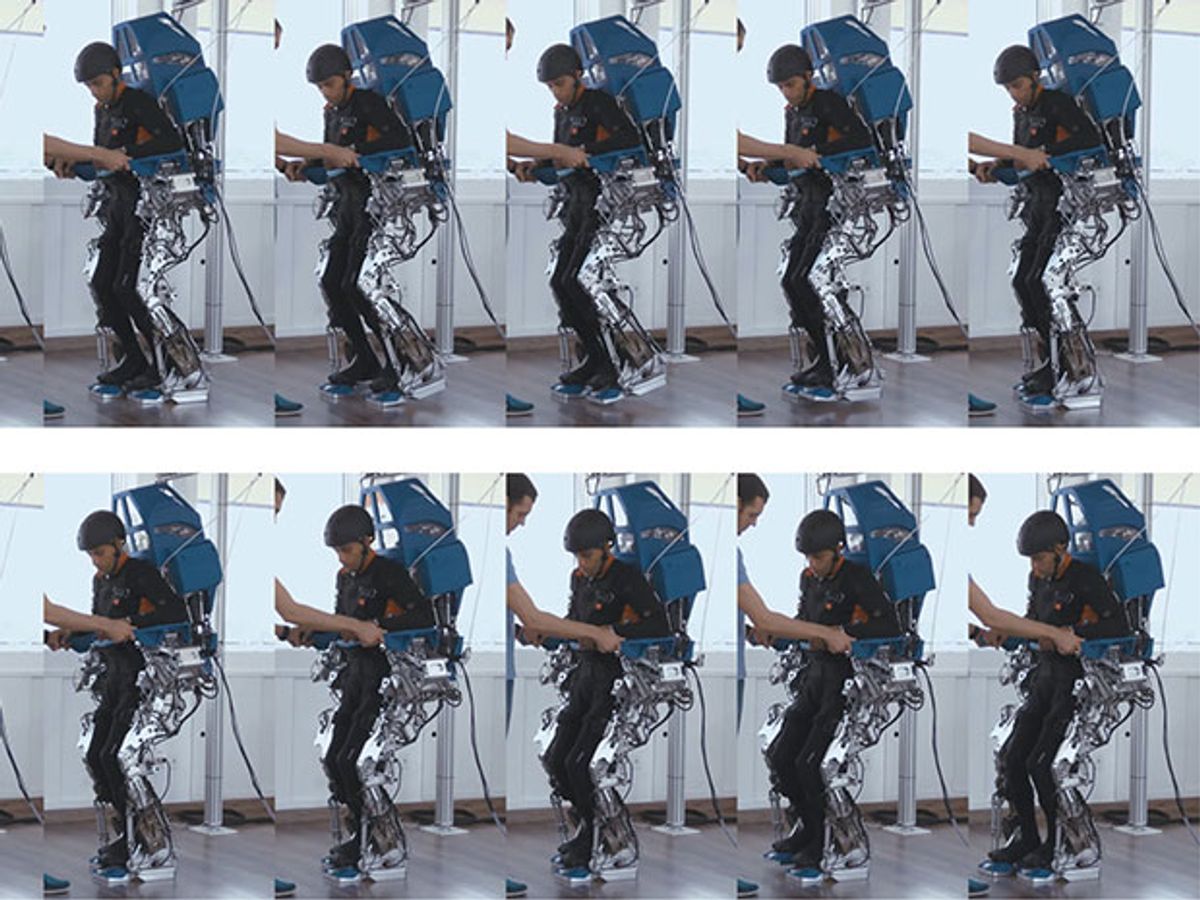Scientists and engineers led by Duke University neuroscientist Miguel A. Nicolelis report that a group of spinal-cord-injury patients who trained to walk using a brain computer interface (BCI) in combination with an Occulus Rift virtual reality device and with a robotic exoskeleton have regained the ability to voluntarily move their leg muscles and to feel touch and pain in their paralyzed limbs.
The study, the results of 12 months of training, is the first long-term BCI experiment to show significant recovery from such severe injuries, the researchers say. The researchers reported their results today in the journal Scientific Reports.
A non-invasive electroencephelogram-based brain computer interface was central to the therapies. During the virtual reality excercises, patients were told to imagine walking through a virtual scene. Initially, the EEG didn’t pick up brain signals related to walking.
“If you said, use your hands, there was modulation of brain activity,” Nicolelis said. “But [because of the spinal injury] the brain had almost completely erased the representation of their lower limbs.”
But after months of training, the EEG signals began to emerge. “Basically, the training reinserted the representation of lower limbs into the patients’ brains.”
The training was helped along by a tactile feedback system. On each arm, subjects wore sleeves containing coin-size vibrators. These produced a tactile signal with each footfall. The signal was even varied so that walking on grass would feel different from walking on sand.
Patients gradually moved up to walking in the real world, assisted by robotic gait training devices made by Lokomat and Aertech. They also rotated through using a BCI-controlled exoskeleton demonstrated publicly in 2014 when one of the research subjects performed the opening kick at the World Cup.
In a conference call with reporters, Nicolelis said that reversing paralysis had not been the goal of the research. “Our goal was simply to create a new prosthetic device for lower limb locomotion.” He added: “But it turned out that six months into the training of these patients, and after the World Cup in 2014, we started realizing that the patients were experiencing an improvement in their neurological information.”
“One previous study has shown that a large percentage of patients who are diagnosed as having complete paraplegia may still have some spinal nerves left intact,” Nicolelis said in a press release. “These nerves may go quiet for many years because there is no signal from the cortex to the muscles. Over time, training with the brain-machine interface could have rekindled these nerves. It may be a small number of fibers that remain, but this may be enough to convey signals from the motor cortical area of the brain to the spinal cord.”
The fact that the study was not designed to improve neural control of people’s limbs complicates matters. Experts told National Public Radio that because there was no control group and the virtual reality training and exoskeleton training were combined, it’s unclear what the role of each therapy is and how it compares to other modalities.
The results published today covered only 12 months of therapy, but most of the patients have now undergone more than two years of training, Nicolelis said. So expect more reports on their progress from his group. They also plan to create a new trial with patients who suffered more recent spinal cord injuries (those in this study had been paralyzed for between 3 and 14 years) to see whether quicker treatment can lead to faster or better results.
Samuel K. Moore is the senior editor at IEEE Spectrum in charge of semiconductors coverage. An IEEE member, he has a bachelor's degree in biomedical engineering from Brown University and a master's degree in journalism from New York University.



